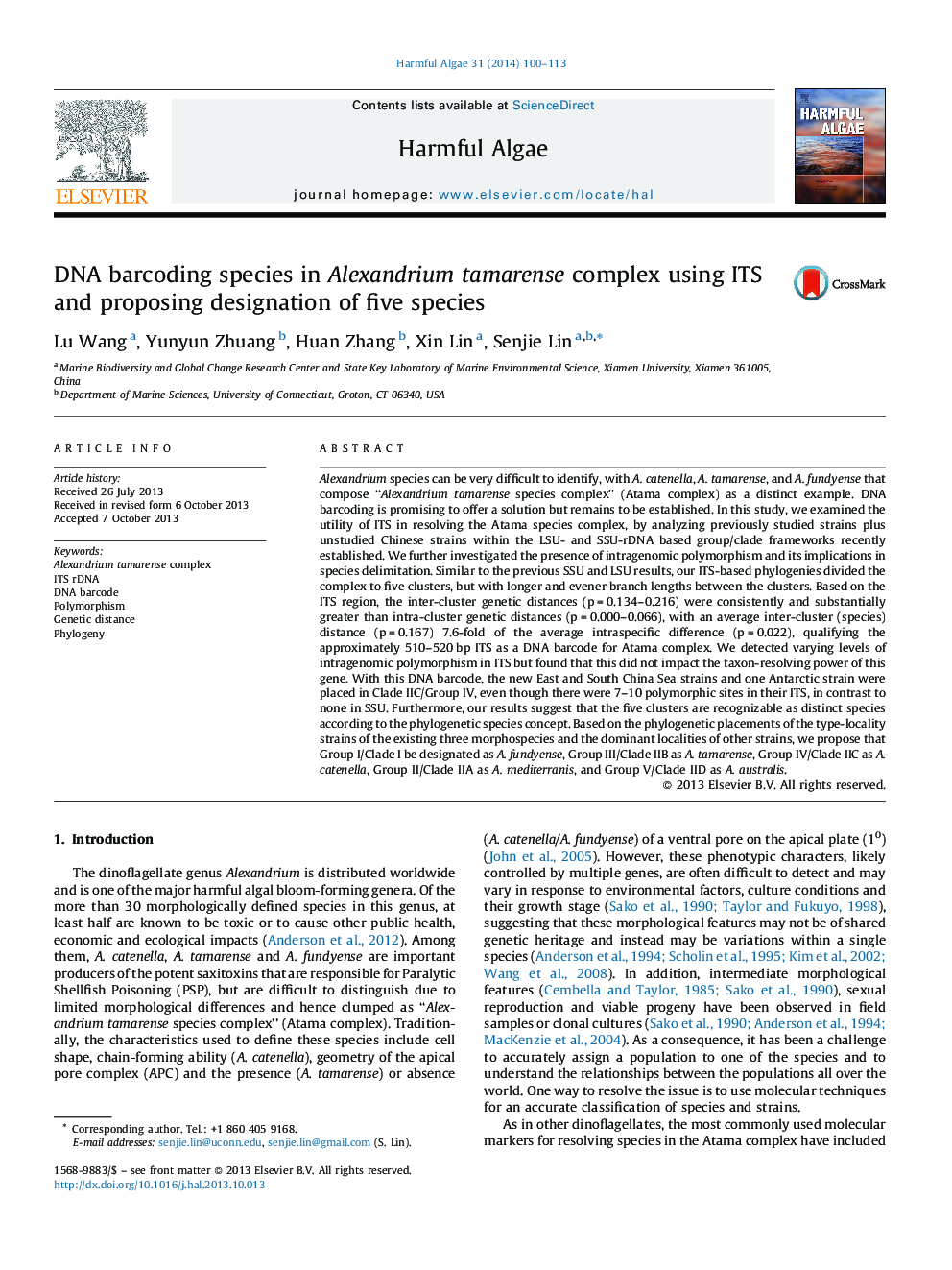| کد مقاله | کد نشریه | سال انتشار | مقاله انگلیسی | نسخه تمام متن |
|---|---|---|---|---|
| 4545388 | 1626940 | 2014 | 14 صفحه PDF | دانلود رایگان |

• First report on the suitability of ITS as DNA barcode to resolve Atama complex.
• Intragenomic polymorphism does not impact taxon-resolving power of ITS.
• We propose the designation of five phylogenetic species for the Atama complex.
Alexandrium species can be very difficult to identify, with A. catenella, A. tamarense, and A. fundyense that compose “Alexandrium tamarense species complex” (Atama complex) as a distinct example. DNA barcoding is promising to offer a solution but remains to be established. In this study, we examined the utility of ITS in resolving the Atama species complex, by analyzing previously studied strains plus unstudied Chinese strains within the LSU- and SSU-rDNA based group/clade frameworks recently established. We further investigated the presence of intragenomic polymorphism and its implications in species delimitation. Similar to the previous SSU and LSU results, our ITS-based phylogenies divided the complex to five clusters, but with longer and evener branch lengths between the clusters. Based on the ITS region, the inter-cluster genetic distances (p = 0.134–0.216) were consistently and substantially greater than intra-cluster genetic distances (p = 0.000–0.066), with an average inter-cluster (species) distance (p = 0.167) 7.6-fold of the average intraspecific difference (p = 0.022), qualifying the approximately 510–520 bp ITS as a DNA barcode for Atama complex. We detected varying levels of intragenomic polymorphism in ITS but found that this did not impact the taxon-resolving power of this gene. With this DNA barcode, the new East and South China Sea strains and one Antarctic strain were placed in Clade IIC/Group IV, even though there were 7–10 polymorphic sites in their ITS, in contrast to none in SSU. Furthermore, our results suggest that the five clusters are recognizable as distinct species according to the phylogenetic species concept. Based on the phylogenetic placements of the type-locality strains of the existing three morphospecies and the dominant localities of other strains, we propose that Group I/Clade I be designated as A. fundyense, Group III/Clade IIB as A. tamarense, Group IV/Clade IIC as A. catenella, Group II/Clade IIA as A. mediterranis, and Group V/Clade IID as A. australis.
Journal: Harmful Algae - Volume 31, January 2014, Pages 100–113